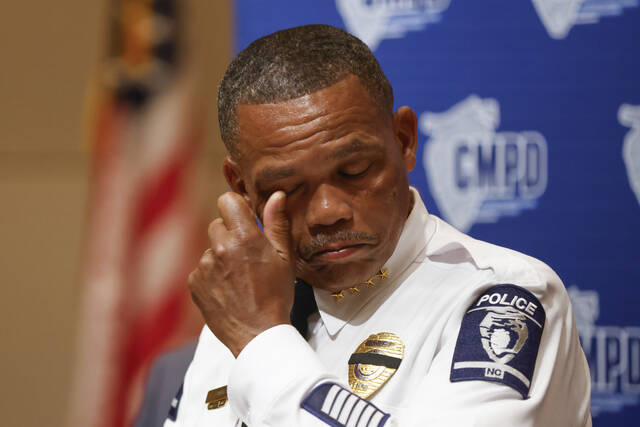On April 30, four police officers were killed in a shooting while attempting to serve a warrant at a home in Charlotte, N.C. Four other law enforcement officers were wounded during the incident. Officers returned fire and the suspect was killed in the ensuing melee.
How can we prevent another incident like this from happening? In my research on mass shootings, I identify three facilitators of them: 1) homicidal mental illness, 2) felony possession of firearms and 3) absent law enforcement.
In the Charlotte shooting, the suspect had a homicidal hatred of the police, making him mentally unbalanced. He also illegally possessed an AR-15 rifle, which means he was an armed felon. And although the police had him cornered, the suspect was a fugitive from justice and had evaded the police previously.
So, we know there is a problem. But can we put the genie back in the bottle? After all, we cannot force a mentally ill person to take medication and do therapy. We cannot trust a gun-toting felon to follow the law. And we cannot expect law enforcement to be everywhere, all the time.
This is where the Sheehan Homicidality Tracker Scale (S-HTS) can help. It is a 16-question test that detects homicidal tendencies in the test-taker. Properly administered at a gun dealership, the S-HTS would (1) fail the homicidal mentally ill, (2) prevent them from being armed and (3) serve as a proxy for law enforcement.
Some would ask what is wrong with what we have. Form 4473 is not a proper psychometric instrument to speak of; people can lie on it without repercussions. And admittedly, the Fix NICS legislation improved the National Instant Criminal Background Check System (NICS). But all it takes is one missing record, and the worst could happen.
Some would say that you can game such a test. But the S-HTS is cleverly devised to thwart cheating. Compare it to data mining and data analysis used by the government to detect welfare fraud before funds are disbursed. Similarly, the S-HTS identifies discrepancies in test-takers’ answers and could be an upfront preventive control.
Some would say that this test is inaccurate. But much work went into making the S-HTS “valid,” in psychometric parlance. Currently, it is the “gold standard” because there are no other homicidality tracker scales out there to compare it with. Hopefully, future scales will improve on the original. But for now, this is the first and the best of its kind.
Some would say that the S-HTS infringes upon their rights. But there is a longstanding prohibition keeping the mentally ill and felons away from guns. Eighteenth-century peace officers were authorized to “lock up the lunatics who are dangerous.” If one is not homicidal, the S-HTS will protect one’s second amendment rights.
Some would say that no one would dare adopt the S-HTS. But take big cities with gun violence problems, who might be interested. If it worked, state governments may adopt it. Then different states may borrow from other states where the test did well in quelling gun violence. And perhaps Congress one day would legislate its federal induction.
The S-HTS may be a long shot, not a silver bullet. But remember the days before seat belts in cars. Then the research showed that people suffered horrendous injuries or died because they were not restrained in their seats during a catastrophic collision. Then the government mandated them in all cars. Today, no one thinks twice about “buckling up.”
The deceased officers in Charlotte left families behind. This is nothing short of an absolute disaster and a tragedy. If we truly honor the sacrifices of the fallen, we should have the gumption to try something radically new, to leave this country better off for following generations of Americans. There must be hope for the future.
This article originally was published in the Trib Live digital newspaper on May 10, 2024.
Please click on the link below to read the original version of this article:
https://triblive.com/opinion/jason-w-park-keeping-guns-from-falling-in-the-wrong-hands-lessons-from-charlotte/
Jason W. Park earned his PhD from the University of Pittsburgh. He is the author of “Bliss + Blues = Bipolar: A Memoir of My Ups and Downs Living with Bipolar Disorder.”









